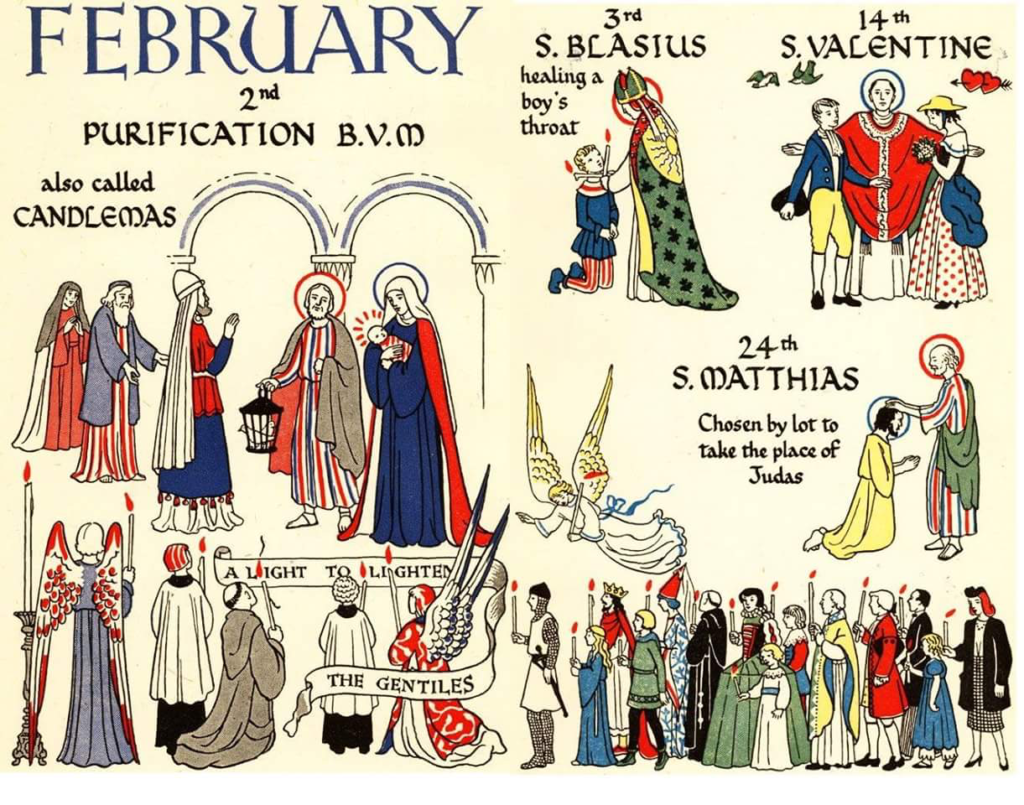Catholic Corner: The Presentation, St. Blaise, and St. Agatha

Image Courtesy of A Catholic Life.
By Isa Pardino
As January comes to a close and February begins, there are many feast days which the Church recognizes, some more commonly known than others.
For example, as many people know, February 14 is the feast of Saint Valentine; however, the Presentation of the Lord, a less commonly celebrated feast day, is recognized on February 2. The Presentation of the Lord occurs 40 days after the birth of Jesus and is also known as Candlemas, since the blessing and procession of candles is included in the mass on this day. Some of the ways to celebrate this feast day include to read Luke 2:22-35, the account of the presentation, meditate on Our Lady of Sorrows, who embraced the will of God even as Simeon predicted that a sword would pierce her heart.
The next feast day is the feast of Saint Blaise, the patron saint of sufferers from throat diseases and of wool combers. According to Franciscan Media, St. Blaise had to flee Armenia and lived in solitude, apart from the wild animals he befriended. One day a group of hunters came upon St. Blaise’s cave and were scared by the sight of him kneeling in prayer surrounded by patiently waiting wild animals. The hunters sent Blaise to prison, and one day a woman came in with her son, who had a fish bone stuck in his throat. Upon Blaise’s command, the boy was able to dislodge the bone from his throat.
One of the most common ways that the Catholic Church celebrates the feast of St. Blaise is by using candles to bless the throats of those people who want the blessing. This year, however, some churches are doing this blessing a little differently because of COVID-19; for example, some churches are doing a general blessing of the congregation using the prayer of Saint Blaise.
The final feast day of the week is Saint Agatha, whose feast is celebrated on February 5. She is the patron saint of breast cancer patients, rape victims, and wet nurses. She suffered persecution at the hands of Quintianus, the man who tried to force Agatha to marry him. He subjected her to torturous means of vengeance, and Agatha only survived because the Lord blessed her with courage and endurance.
The celebration in St. Agatha’s hometown , Sicily, Italy, includes a multitude of festivals that begin on February 3 and last until February 6. During the celebration it is common to eat good nougat with hazelnuts, or the typical olivette of Saint Agatha, green almond paste sweets. These sweet treats are meant to look like breasts, because as a part of her torture, Saint Agatha’s breasts were cut off in order to make her suffer. The reason that the celebration in her hometown lasts for three days is because of her miracles on the Mount Etna eruptions, earthquakes and some epidemics affecting Catania. On February 1, 252 A.D., the city was threatened by a violent eruption. The locals of the nearby villages took the veil that was wrapped around Saint Agatha’s tomb, and used it as a shield against the lava flow. The white veil suddenly turned red and stopped the eruption. It was February 5, the day of her martyrdom anniversary.
One way to celebrate her feast day is to say this prayer: “Saint Agatha, you suffered sexual assault and indignity because of your faith and purity. Help heal all those who are survivors of sexual assault and protect those women who are in danger. Amen.”
Looking into next week, a fun way to start celebrating Valentine’s Day is to start with the St. Valentine Novena that starts on February 5. Saint Valentine was a priest who comforted Christians who were being persecuted. He was martyred for refusing to deny his faith. Prior to his death, he sent a loving note to a child whom he had been teaching, the daughter of his jailer, and that note eventually led to the tradition of Valentine’s cards.
He is the patron saint of engaged and married couples Here is the link to start the prayer!







